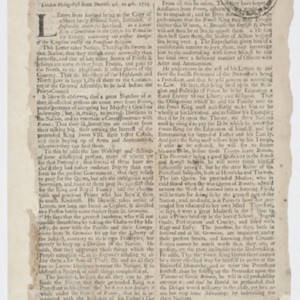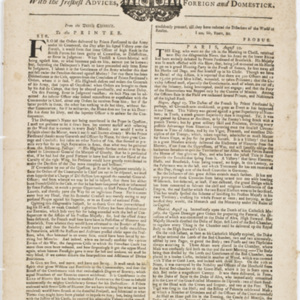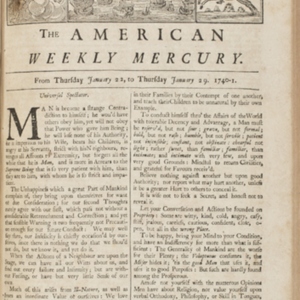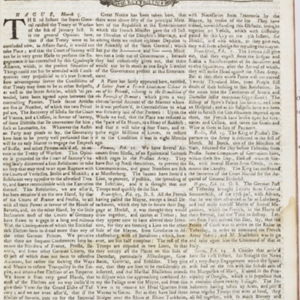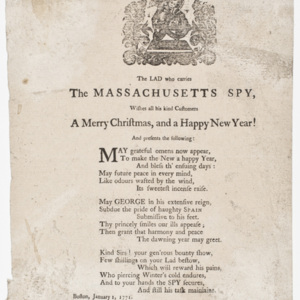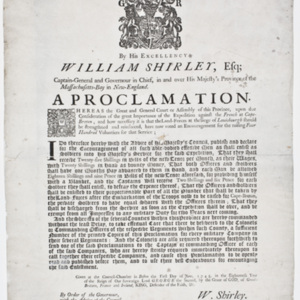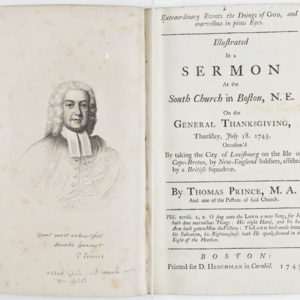Colonial Print Culture
Printing came early to New England, late to Virginia. And this fact suggests an important difference between the two colonial areas. The first printing press arrived in Massachusetts in 1638, just eight years after the planting of the Puritan colony in 1630. The press was set up in Cambridge as an auxiliary enterprise of Harvard College, which had been founded in 1636. Both the college and the press were outgrowths of the Puritan commitment to learning and religious literacy. The early products of the Cambridge press were materials for the use of the college and colony, and soon the Cambridge press was turning out catechisms, schoolbooks, legal documents, sermons, almanacs, and even texts translated into the native Algonquian language—all works meant to support the public life of the community. Virginians, meanwhile, had a different notion of how communities were constructed and governed, one in which printing played a lesser role. The first successful press did not appear there until almost a century later, in the 1730s.
Though no successful newspaper appeared in America in the seventeenth century, many of the publications of the Cambridge press and of the new commercial presses that emerged in Boston after 1675 were news oriented, in a particularly Puritan way. Ministers and magistrates in Massachusetts had a providential understanding of current events. They saw in human and natural events, just as they saw in the Bible, the handiwork of God. Therefore, almanacs, sermons, proclamations, obituaries, histories, and narratives often dealt with events that were considered “divine providences,” though today we would call them simply “the news”: droughts, epidemics, earthquakes, storms, shipwrecks, comets, untimely deaths, murders, executions, wars, witchcrafts, days of thanksgiving, and so on. The religious context of current-events reporting continued into the eighteenth century.
The first successful newspaper in America, the Boston News-Letter, appeared in 1704, and until 1719 it was the only newspaper in the colonies. In 1719 a local competitor emerged in Boston, the Boston Gazette, and the first newspaper in Philadelphia, the American Weekly Mercury, was launched that year as well. The first newspaper in Virginia, the Virginia Gazette, was founded in 1736. By 1740 there were sixteen newspapers in the British colonies, all weeklies. By the time of the American Revolution in 1775, there were some thirty-seven newspapers in business.
Each American newspaper had its own personality. Some were operated by postmasters or booksellers, but most were produced by printers who did other kinds of printing as well. Some were more newsy, some more literary, but nearly all followed a standard format, in the style of the London papers. Early American newspapers were generally two pages, one small sheet printed front and back; later papers were four pages, one larger sheet printed front and back and folded. Typically, the first news section was foreign news, cribbed from the London papers. Next came news from other American colonies. Then a bit of local news. Then advertisements. All the items, including the ads, were usually very brief, often just one paragraph or even one sentence.
Newspapers were just one part of the news system in eighteenth-century America, especially in New England. Other printed forms, such as almanacs, proclamations, and broadsides, also carried current-events reporting and commentary, just as they had before the rise of newspapers.



